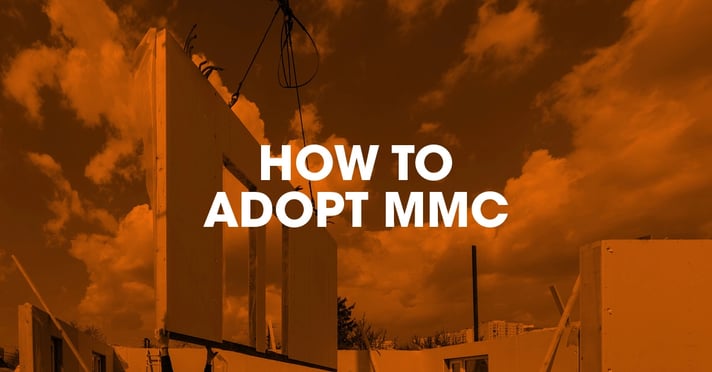The common barriers to MMC adoption
The most common perceived barriers to more widespread adoption of MMC are:
- Complex products that make it difficult to choose between them
- Lack of negotiating power unless thousands of homes are being built
- Higher costs and lack of cost certainty compared to traditional build methods
- A scheme must be of a certain size / large-scale to make it viable
- Uncertainty around quality of construction
- The financial risk is too great
- The providers’ boards have little appetite to take on the risk
- Loans cannot be secured against MMC homes
The Building Better programme has worked through the barriers and proposed solutions for each, enabling it to launch a Category 1 (modular) procurement framework with Categories 2-5 (panelised and component systems) due next Spring.
The framework is based on a baseline specification for products and systems, including a requirement for 60-year minimum design life accreditation from a body such as BOPAS, BBA or BRE, and a 10-year structural warranty. Manufacturers must also demonstrate quality standards ISO 9001 and ISO 14001 (or equivalent).
Units must take a fabric-first approach (minimum U-values), have no gas requirement nor supply, meet fire safety and Nationally Described Space standards, demonstrate a drive towards operational net zero carbon and have the option to be fully wheelchair accessible.
One of the Building Better procurement framework’s key objectives is to create value via an aggregated pipeline of developments and “foster a culture of continuous improvement.”
How has the framework tackled the barriers?
-
Complex products that make it difficult to choose between them
The programme notes “two common systems” within modular (Category 1). It also recognised a great deal of research and development in heating and cooling technologies. So the procurement framework provides a solution that offers choice and confidence in suppliers, and focuses on value and collaboration
-
Lack of negotiating power unless thousands of homes are being built
With traditional procurement inefficient and competition based on cost along, the framework uses a lot structure which allows for helpful early engagement and direct contract awards. There is early evidence that better prices are found through aggregation
-
Higher costs and lack of cost certainty compared to traditional build methods
The framework provides a standardised offer with cost certainty and customisation options, with fixed prices allowing fair comparisons. This helps to tackle issues like variations in craneage, roof pitch and orientation for solar/net zero carbon considerations and so on
-
A scheme must be of a certain size to make it viable
Once the framework is live, smaller sites can adopt MMC through total unit aggregation. The size of a development ceases to be a barrier but active management of the pipeline will be key
-
Uncertainty around quality of construction
The framework removes uncertainty by working from an agreed baseline of minimum specifications, standards and required accreditations (see above) and procurement is based on a 70/30 quality/cost assessment
-
The financial risk is too great
To minimise risk, the framework will consider traditional credit profile assessments in addition to investor backing and offers of performance bonds, while taking into account a shorter window of exposure based on short production timescales (compared to traditional build)
-
The providers’ boards have little appetite to take on the risk
The development of the Building Better programme and its procurement framework has included influencing housing providers’ boards, asset and sales teams, to tackle misconceptions as well as any previous bad experiences
-
Loans cannot be secured against MMC homes
While work continues on developing MMC standards, five of 16 major lenders now have a MMC policy either planned or already in place and it is hoped more will come on board as modern methods gain more market penetration.
Will you be adopting MMC?
MMC continues to present opportunities around working towards net zero carbon and tackling the climate crisis, improving quality via a manufacturing process, and taking on the housing crisis with at-scale construction.
It’s still one of the most talked about topics in the housing construction sector.
MMC is finding early routes into the market via partnership working (Homes England) and procurement frameworks (Building Better), providing evidence that collaboration is a critical factor in making a success of building MMC homes.
For now, at least, “going it alone” seems to be a trickier proposition.
- Read more about the National Housing Federation’s Building Better programme here
- Is MMC adoption about to take off? Industry experts make their case
- Are you a manufacturer of MMC systems? Learn more about LABC Warranty's system acceptance


HAVE YOUR SAY...